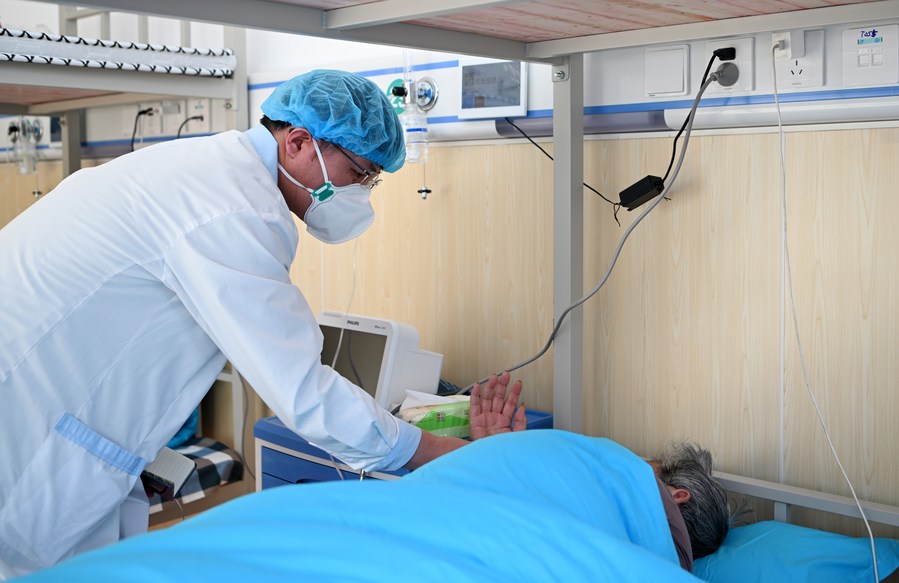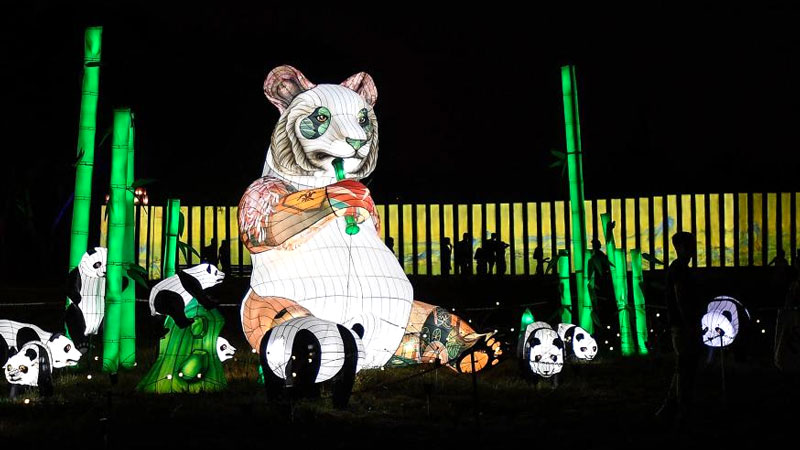Tianjin working hard to give COVID-19 patients timely treatment

A medical worker learns about a patient's health conditions in a temporary fever clinic at Traditional Chinese Medicine Hospital of Xiqing District, north China's Tianjin, Dec. 28, 2022. (Xinhua/Li Ran)
TIANJIN, Jan. 9 (Xinhua) -- On Dec. 30, 2022, Shen Runkun, a doctor at an emergency center in north China's Tianjin Municipality, started work at 7 a.m. and was rushed off her feet the whole day.
Lately, a rise in COVID-19 infections in the city has significantly increased the workload for Shen and her coworkers at the Tianjin Medical Emergency Center, prompting them to make nonstop ambulance trips.
To ensure that patients infected with COVID-19 can be treated as early as possible, staff at the emergency center have been working overtime. Oftentimes, they can only squeeze in take-out meals during short breaks in between missions.
On one ambulance trip on Dec. 30, Shen picked up a 50-year-old patient at a nursing home. Bedridden for a long time with a severe underlying medical condition, she had developed a pulmonary infection.
While en route to the nursing home, Shen made some inquiries about the patient's condition. About 13 minutes after the pick-up, the ambulance arrived at the Second Hospital of Tianjin Medical University, where emergency physicians performed a more comprehensive examination and treatment.
"My colleagues have all stayed on the front line. Even if some fall ill, they don't complain and keep working. We hope to overcome the difficulties by working together," Shen said.
According to Li Shanglun, director of the emergency center, there are now 449 ambulances in the city.
"We have relatively abundant manpower support. We have the confidence and ability to provide high-quality pre-hospital medical emergency services for our people in Tianjin," Li said.
As China continues its optimization of COVID-19 epidemic prevention and control measures, the country's anti-virus focus has shifted to protecting health, and preventing and treating severe cases.
A combination of measures have been taken to boost access to medical treatment and drugs, improve health services for the elderly and other key groups, accelerate COVID-19 vaccination, and strengthen epidemic prevention and control in rural areas.
The Second Hospital of Tianjin Medical University, for its part, has set up a second emergency area, expanding the original 44 beds in the emergency room to 70 beds, and dispatched ventilators, transnasal high-flow oxygenators, infusion pumps and other equipment to ensure that patients with acute and critical illnesses have adequate resources for resuscitation, according to Chen Bing, vice president of the hospital.
As part of nationwide efforts, the capacity of fever clinics at various levels is being strengthened.
As of Dec. 25, 2022, the number of fever clinics in second-grade hospitals and above had reached 16,000 in China, while the number of such clinics in grassroots medical institutions totaled 41,000.
The community health service center of Zhangjiawo Township in Tianjin's Xiqing District has a separate fever clinic with its own pharmacy.
"We now have sufficient medicine stocks," said Yang Yungui, director of the center.
According to Yang, a special fever medicine bank has been set up, which stores more than 40 types and over 10,000 boxes of anti-inflammatory and antiviral drugs, including those treating high temperatures, coughs and asthma.
"It can guarantee the supply for fever patients and patients with related symptoms for nearly a month," Yang said.
Primary-level medical and health institutions like the one in Zhangjiawo have handled nearly 60 percent of fever cases in Xiqing District, greatly relieving the pressure on secondary and tertiary hospitals, according to the Tianjin municipal health commission.
Photos
Related Stories
- China plays key role in global response to COVID-19, says Pakistani health scientist
- China's insurance system to cover more anti-COVID drugs
- China to cease criminal charges for breaching COVID-19 response measures
- China's latest COVID-19 control protocol highlights vaccination, personal protection
- Foreign diplomats in China view COVID response policy adjustment timely, necessary
- New COVID protocol science-based response to current epidemic situation
Copyright © 2023 People's Daily Online. All Rights Reserved.









